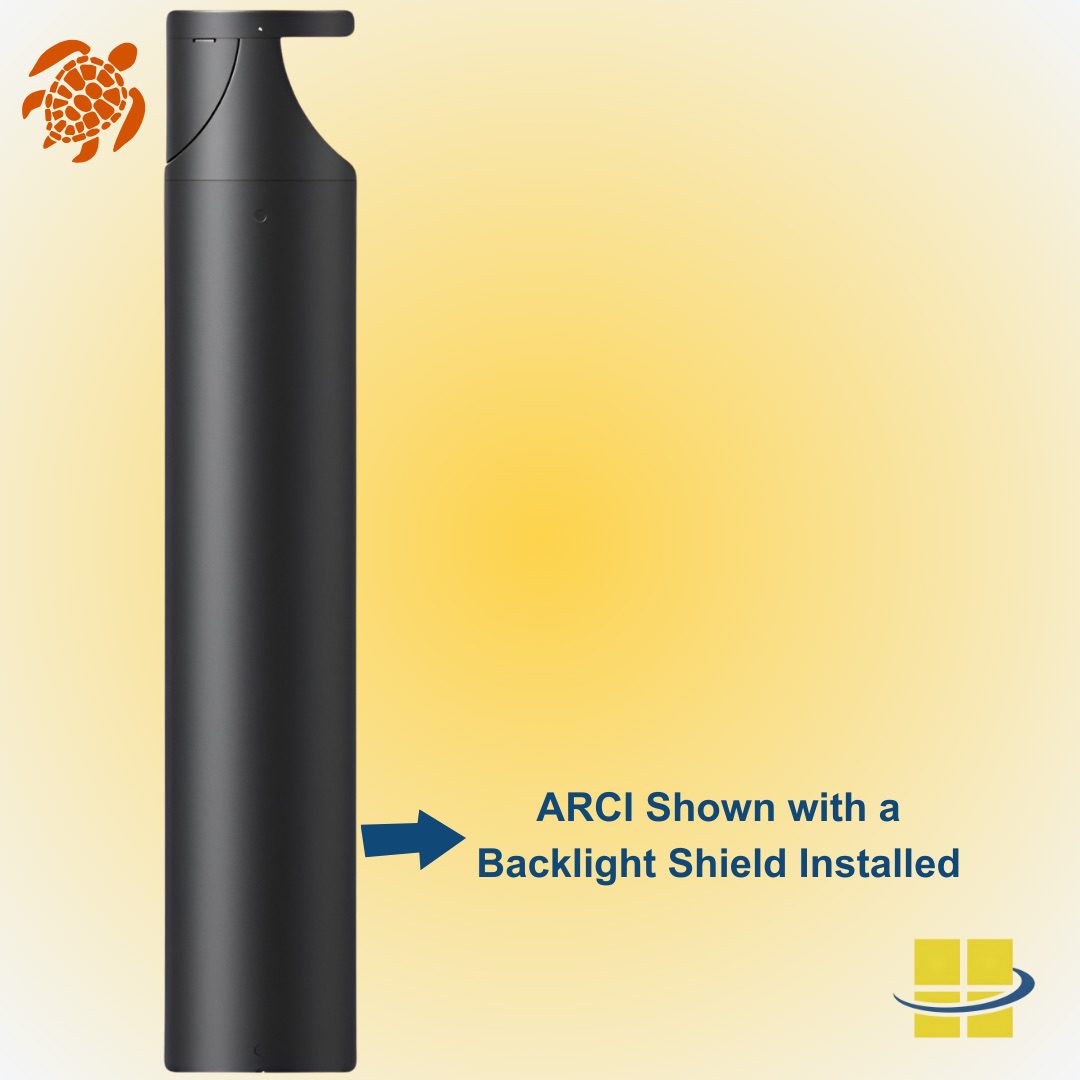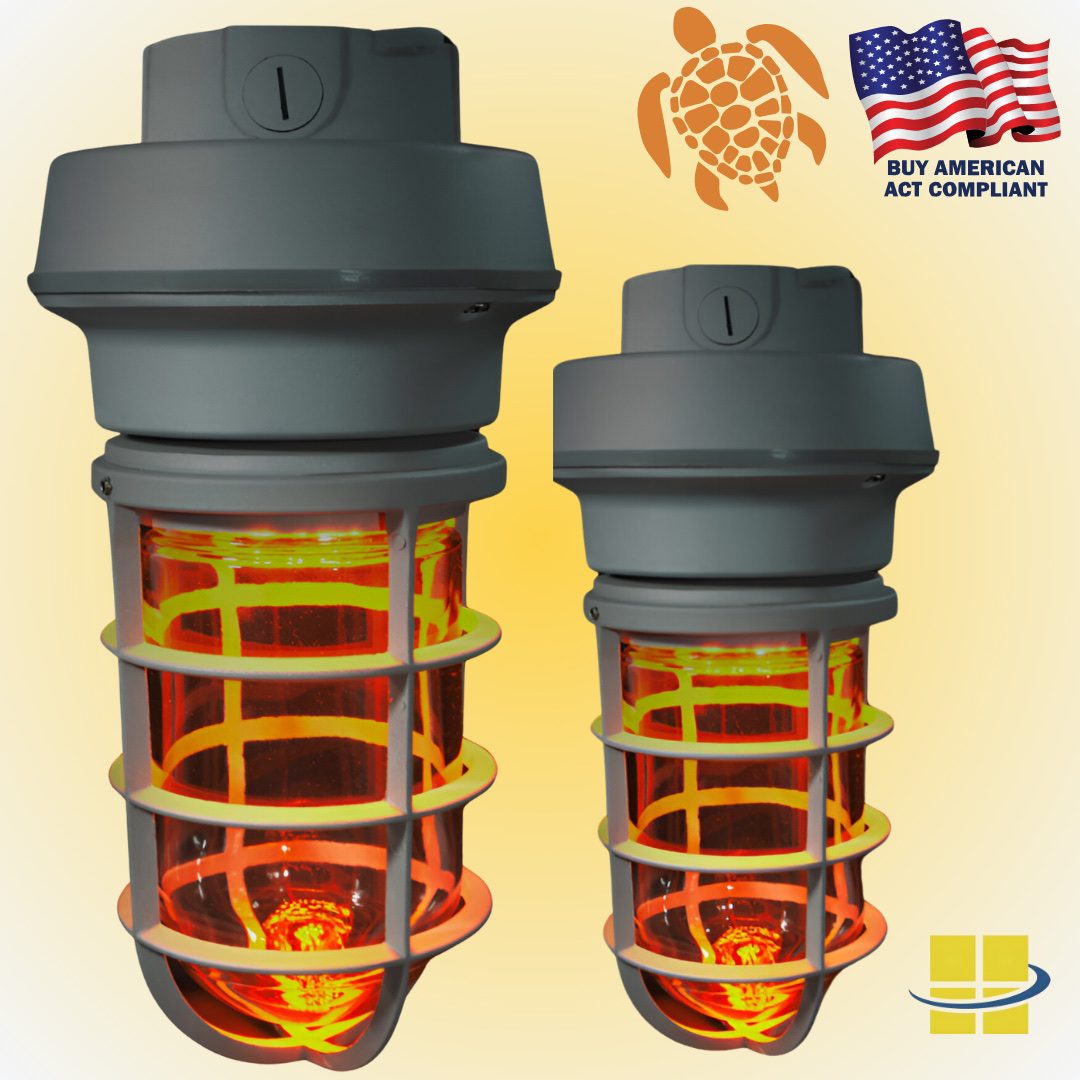Access Fixtures’ LED wildlife lights are expertly crafted to enhance safety and visibility in coastal areas, roads, walkways, and parking lots, while simultaneously reducing the impact of light pollution on local wildlife populations. These specialized lighting solutions are essential for regions where preserving the natural habitat is as crucial as maintaining human safety.
Unlike conventional lighting options, the LED lamps utilized in these wildlife-friendly fixtures are measured in nanometers rather than Kelvin temperature. This distinction is vital as Kelvin and nanometers both relate to the color spectrum but measure different aspects. Kelvin quantifies the color temperature of light sources, typically used to describe the warmth or coolness of a light. In contrast, nanometers specify the wavelength of light, which is crucial in applications where specific light color impacts ecological dynamics, such as in areas inhabited by wildlife.
The use of nanometer-specific measurements allows these lights to emit wavelengths that are less disruptive to nocturnal animals, sea turtles, birds, and other wildlife, helping to prevent disorientation and other negative effects caused by artificial lighting. By integrating these advanced LED wildlife lights, communities in sensitive environments can achieve a balance between human needs and environmental stewardship, ensuring the protection of wildlife while still providing adequate lighting for safety and security purposes.
Key Takeaways
-
- Targeted Wavelengths Reduce Wildlife Impact: Access Fixtures’ LED lights emit at 590 nm, a wavelength less noticeable to wildlife, minimizing negative effects like disorientation.
- Balanced Safety and Environmental Stewardship: These LED lights enhance human safety by improving visibility in various settings while reducing environmental impact with precise, nanometer-specific light emissions.
- Efficient Design and Sustainability: The strategically designed fixtures prevent light spill and are energy-efficient, promoting sustainable practices while supporting ecological health and safety.
Understanding Kelvin Temperature and Nanometers in Wildlife Lights
Kelvin Temperature and Its Impact on Wildlife Lighting
Kelvin temperature is a scale used to describe the color temperature of light sources, indicating the perceived color emitted by the light. The range typically spans from 1000K, which emits a very warm, almost red light, to 8000K, which appears much cooler and bluer. The higher the Kelvin temperature, the bluer the light. This is crucial for understanding light pollution as bluer wavelengths can be more disruptive to wildlife. However, it’s important to note that a Kelvin temperature is not a single wavelength but a blend of various wavelengths within the visible light spectrum. This blend can create a perceived color that might not accurately reflect the impact of individual wavelengths on wildlife.
Nanometers: Precision in Wildlife Lighting
In contrast to Kelvin temperature, nanometers measure specific wavelengths of light. This precise measurement is vital in wildlife-friendly lighting solutions because different species react differently to various wavelengths. Wildlife-friendly LED lamps often use a specific wavelength, such as 590 nm, which is carefully chosen because it minimizes visibility to certain wildlife species, thereby reducing disorientation and other negative impacts.
The Importance of 590nm Wavelength in Wildlife-Friendly LED Lighting
Tailored Lighting Solutions by Access Fixtures
Access Fixtures offers a range of LED wildlife lights, including flood lights, wall packs, bollard lights, and garage lights, specifically designed to emit light at 590 nm. This wavelength is crucial for wildlife conservation efforts because it falls outside the visible spectrum for many animals impacted by light pollution. By using LED lights that emit at this specific nanometer, there is minimal disturbance to the natural behaviors of wildlife, particularly nocturnal animals that are more sensitive to certain types of artificial light.
Access Fixtures’ LED Wildlife Lighting Solutions
Access Fixtures specializes in LED wildlife lighting that caters specifically to the needs of environments requiring minimal impact on local fauna. Their range of products includes:
- LED Flood Lights: Ideal for illuminating large outdoor areas without spreading light beyond necessary boundaries, using directed beams at wildlife-friendly wavelengths.
- LED Wall Packs: Provide perimeter lighting that enhances security while being conscientious of nearby animal habitats.
- LED Bollard Lights: Offer pathway lighting that guides human traffic along walkways and parking areas without disturbing nocturnal wildlife. Click to learn more about Commercial Bollard Lights for wildlife-friendly LED Lighting Applications
- LED Garage Lights: Ensure safe parking environments with overhead lighting designed to be minimally invasive to wildlife.
Addressing the Spectrum Beyond Visible Light
It’s important to note that the impact of lighting on wildlife is not solely about visible light. Ultraviolet (UV) and infrared (IR) emissions can also affect wildlife. Quality wildlife-friendly LED lights are designed to minimize or eliminate UV and IR emissions, which further helps protect sensitive species.
The Importance of Fixture Design and Placement
The design and placement of wildlife lighting fixtures are as important as the light itself. Proper shielding that directs light downward and prevents spill into the sky or horizontally into habitat areas is critical. Such designs help in achieving the goals of light pollution reduction and safety without compromising the integrity of nearby wildlife environments. Dark Sky Lighting Insights
Comparison with Conventional Lighting Solutions
Traditional lighting solutions, such as high-pressure sodium lights, often emit light at 660 nanometers, within the visible spectrum of humans and many wildlife species. While this wavelength can appear similar in color to the 590 nm wavelength when perceived by humans, its impact on wildlife is significantly different. High-pressure sodium lights can inadvertently contribute to habitat disruption because they are visible to many species, leading to potential disorientation and other ecological disturbances.
What Color Temperature Are LED Wildlife Lights?
LED wildlife lights are typically set at a color temperature that minimizes disruption to local wildlife. These fixtures are often not described in terms of Kelvin but rather in nanometers to specify the exact wavelength of light emitted. For general purposes, wildlife-friendly LED lights are commonly in the amber spectrum, corresponding to color temperatures below 3000K when translated into Kelvin terms. However, the focus remains on the specific wavelength suitable for the area and species being protected, such as the 590 nm lights used by Access Fixtures, which are specifically designed to be less perceptible and disruptive to wildlife. More about Amber LED Lighting here.
Conclusion
In conclusion, when choosing LED wildlife lights, the color temperature in Kelvin might not always be the most relevant measure. The emphasis should instead be on the wavelength in nanometers to ensure that the lighting is tailored to the needs of the environment and its non-human inhabitants. Click here for more details on LED Wildlife Lighting
Frequently Asked Questions
What makes LED wildlife lights different from conventional lighting options?
LED wildlife lights, such as those offered by Access Fixtures, are specifically designed to emit light at wavelengths that minimize disruption to local wildlife, such as 590 nm. Unlike conventional lighting that measures light in Kelvin temperature, LED wildlife lights use nanometer measurements to specify exact wavelengths, which are less perceptible to many animal species.
Why is the 590 nm wavelength important in wildlife-friendly lighting?
The 590 nm wavelength is crucial because it falls outside the visible spectrum for many wildlife species, particularly nocturnal animals. This specific wavelength helps in reducing disorientation and other negative effects caused by artificial lighting, making it ideal for conservation efforts in areas prone to light pollution.
What types of LED wildlife light fixtures does Access Fixtures offer?
Access Fixtures provides a comprehensive range of LED wildlife lighting solutions, including LED flood lights for broad area illumination, LED wall packs for perimeter lighting, LED bollard lights for pathway illumination, and LED garage lights for safe parking environments. All these fixtures are designed to emit light at wildlife-friendly wavelengths.
How do LED wildlife lights enhance safety while being environmentally conscious?
These lights are engineered to provide adequate illumination for human activities in coastal areas, roads, walkways, and parking lots, ensuring safety and visibility. Simultaneously, by emitting light at specific nanometer wavelengths, they greatly reduce the impact of light pollution on the surrounding wildlife, balancing human needs with environmental stewardship.
Are LED wildlife lights energy efficient?
Yes, LED lights are known for their energy efficiency. Access Fixtures’ LED wildlife lights not only reduce the ecological footprint by minimizing light pollution but also conserve energy, leading to lower operational costs and reduced environmental impact over time.
How do the design and placement of wildlife lighting fixtures affect their effectiveness?
The design and placement of wildlife lighting fixtures are crucial for maximizing their benefits. Proper shielding and directional control prevent light spill into the sky or horizontally into habitat areas, which is essential for reducing light pollution and protecting wildlife while still providing necessary illumination for human safety.
Can the wavelength of LED wildlife lights affect ultraviolet (UV) and infrared (IR) emissions?
Quality wildlife-friendly LED lights are designed not only to emit light at specific visible wavelengths but also to minimize or eliminate UV and IR emissions. This consideration is important as UV and IR can also affect wildlife, further enhancing the suitability of these lights for sensitive environments.
What should be considered when choosing LED wildlife lights for a specific area?
When selecting LED wildlife lights, consider the specific environmental conditions and wildlife species in the area. It’s important to choose a wavelength that effectively reduces disruption to local fauna. Additionally, assess the intensity and directionality of the light to ensure it meets human needs without adversely affecting the natural habitat.



